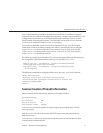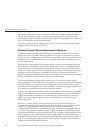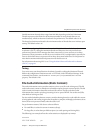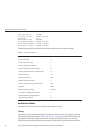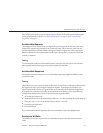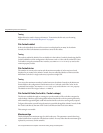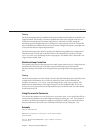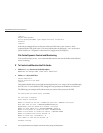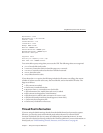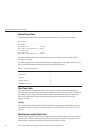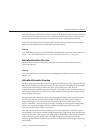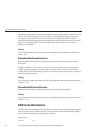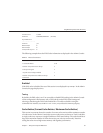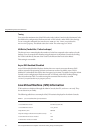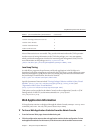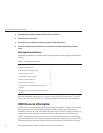
ReplaceFiles: false
ReplaceInterval: 1 milliseconds
HitOrder: false
CacheFileContent: true
TransmitFile: false
MaxAge: 3600 seconds
MaxFiles: 600000 files
SmallFileSizeLimit: 500000 bytes
MediumFileSizeLimit: 1000001 bytes
BufferSize: 8192 bytes
CopyFiles: false
Directory for temporary files: /tmp
Hash table size: 1200007 buckets
You can include a query string when you access the URI. The following values are recognized:
■
?list: Lists the les in the cache.
■
?refresh=n: Causes the client to reload the page every n seconds.
■
?restart: Causes the cache to be shut down and then restarted.
■
?start: Starts the cache.
■
?stop: Shuts down the cache.
If you choose the ?list option, the le listing includes the le name, a set of ags, the current
number of references to the cache entry, the size of the le, and an internal le ID value. The
ags are as follows:
■
C: File contents are cached.
■
D: Cache entry is marked for delete.
■
E: PR_GetFileInfo() returned an error for this le.
■
I: File information (size, modify date, and so on) is cached.
■
M: File contents are mapped into virtual memory.
■
O: File descriptor is cached (when TransmitFile is set to true).
■
P: File has associated private data (should appear on shtml les).
■
T: Cache entry has a temporary le.
■
W: Cache entry is locked for write access.
Thread Pool Information
If you are using the default settings, threads from the default thread pool process the request.
However, you can also create custom thread pools and use them to run custom NSAPI
functions. By default, Web Server creates one additional pool, named NativePool. In most
cases, the native thread pool is only needed on the Windows platform. For more information on
thread pools, see
“Understanding Threads, Processes, and Connections” on page 40.
UsingMonitoringDatatoTuneYour Server
Chapter2 • TuningSunJavaSystemWebServer 65



